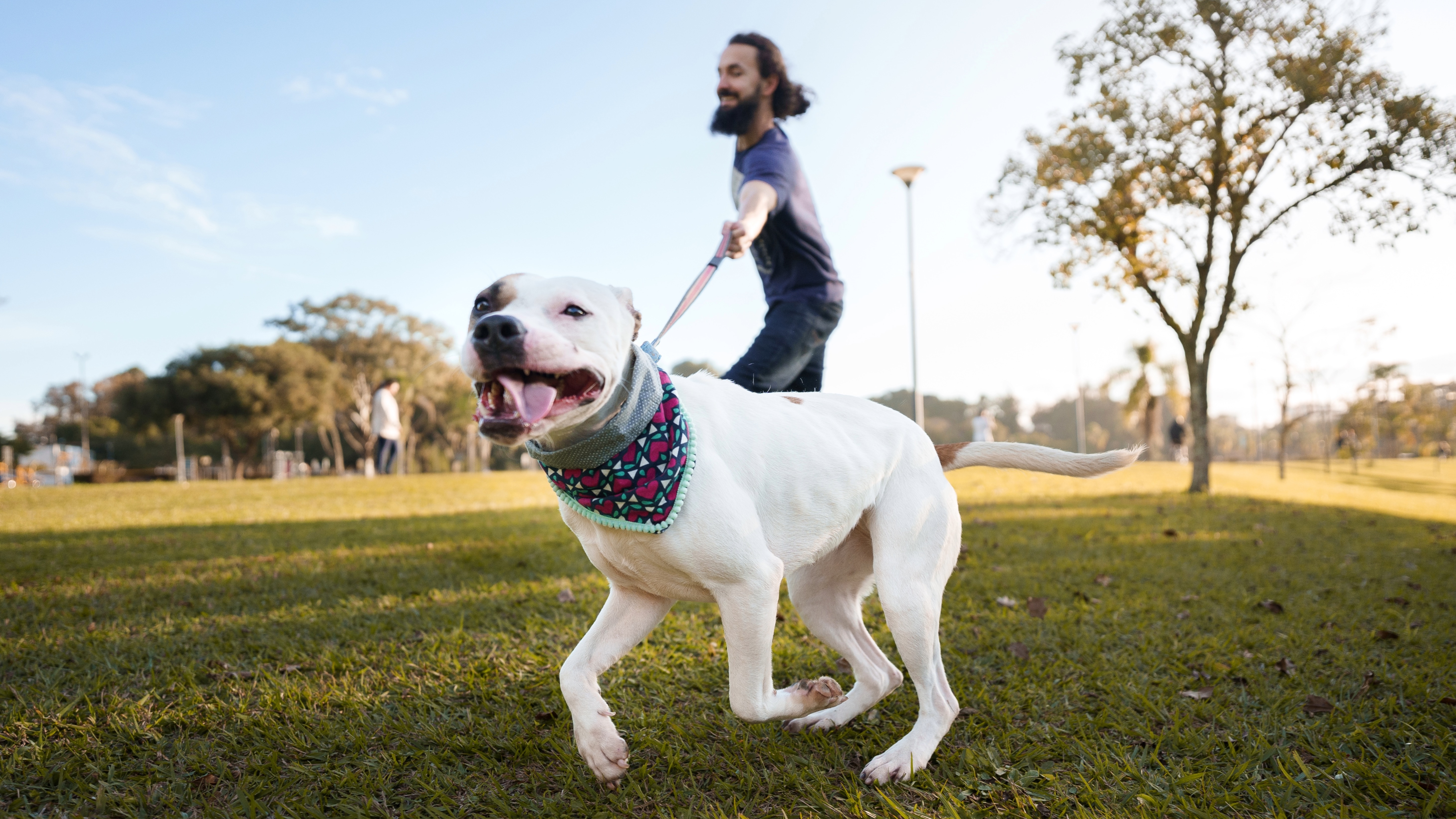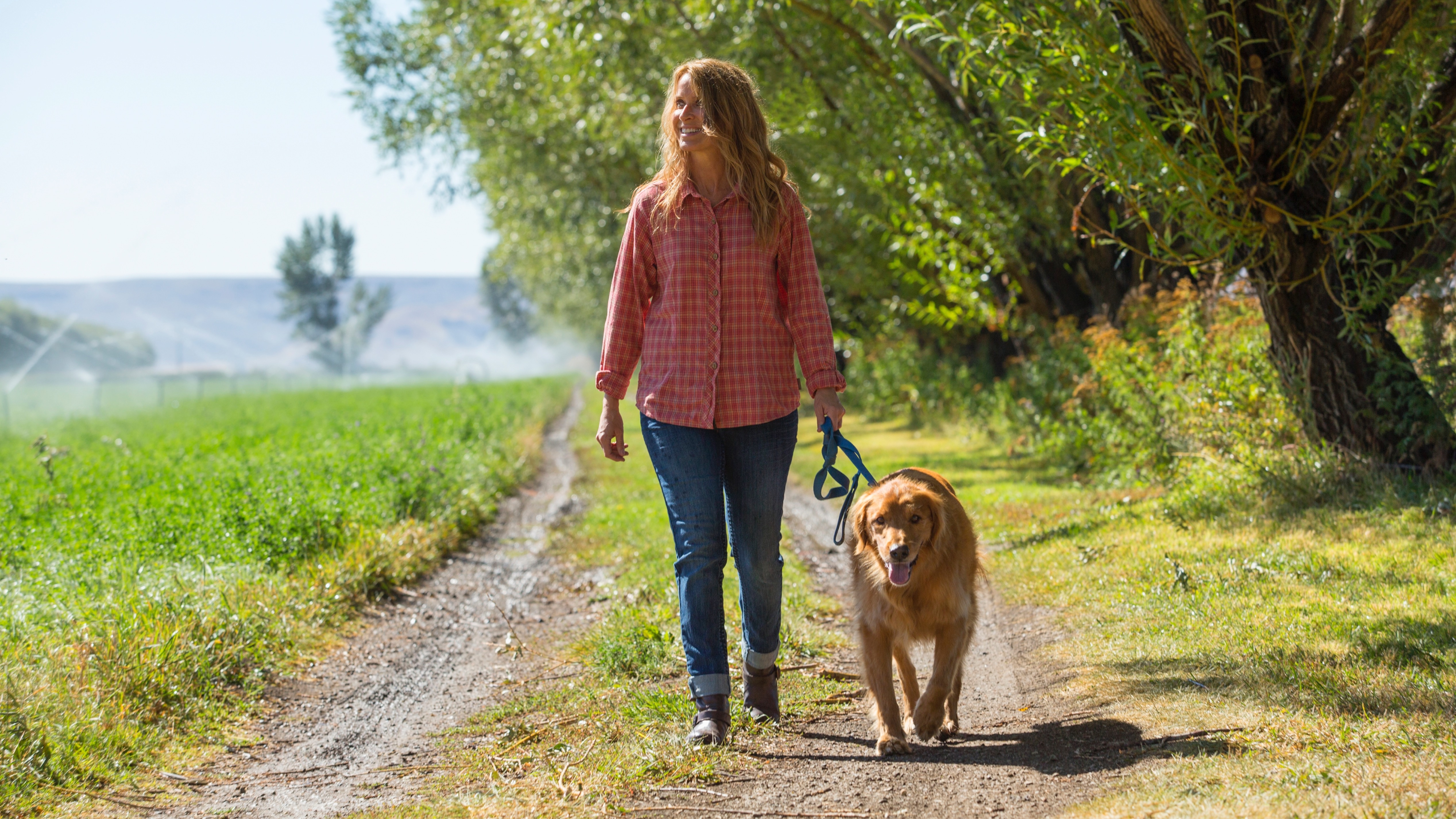Owning a reactive dog is hard. Here's how I navigated the social challenges with my pooch
Here’s what I did to cope and improve the challenges of owning a reactive dog

Before training as a dog behaviorist, I struggled to help Poppy, my reactive dog. I'd shared my life with multiple dogs, all well-behaved and friendly. Still, this time, I was out of my depth.
Owning a reactive dog can trigger so many emotions and become a source of increasing stress. Walking your dog may become something you avoid because you fear encountering others and finding yourself in conflict with someone.
As a dog behaviorist, I am fascinated by the ways that dogs react. I trained as a behaviorist to help my rescue Poppy after searching for how to calm a reactive dog and now spend my time helping people understand their dogs better.
Here, I explain some of the social challenges I encountered with my reactive dog and how I went about navigating them.
1. I was embarrassed by my dog
Poppy was a big, black Weimaraner cross with piercing eyes and a booming bark. When she saw a dog or a person in the distance, she barked and lunged to the end of the lead, dragging me behind her. She would not stop barking until we lost sight of the trigger.
Poppy's outbursts were spectacular, and people couldn't help but pass judgment when they witnessed it. She was often labeled "aggressive", and those lucky people walking their quiet, well-behaved dogs told me to "control my dog."
I dreaded taking Poppy for public walks and eventually stuck to walking her in the landlord's fields so we didn't encounter anyone.
Get the best advice, tips and top tech for your beloved Pets
2. I became socially isolated
My fiancé and I often took our dogs to the local café, attended dog events, and visited new places. As Poppy's behavior worsened, we visited public places with the dogs less. That saddened us because the other dogs had to stay behind if we couldn't take Poppy.
Friends and family felt awkward when visiting, and we couldn't take Poppy anywhere "strange" as her anxiety manifested as increased reactivity. We couldn't relax and enjoy the companionship of our little pack of four dogs when we went out.
It's fair to say that, for the first year, our lives felt compromised by my lack of knowledge about managing Poppy's behavior.
3. Stress and anxiety
Living with a reactive dog can be exhausting and emotionally intense for the human, let alone understanding anxiety in dogs themselves.. When you take your dog out, you spend most of the time in hyper-vigilance, scanning the horizon for anything that may set your dog off.
Walks were rarely enjoyable unless I could see at least three hundred yards ahead. Unfortunately, even then, I still got caught out. Poppy's laser focus meant she was aware of something long before it appeared. Once, she ran down a hill to an elderly couple, one of whom was terrified of dogs. Poppy didn't bark at them, but the lady stomped up the hill, furiously kicking out at my other dogs and yelling that I had no control.
Honestly, after that day, I never wanted to go out again!
4. Frustration
Training a reactive dog is frustrating when you are unsure what to do. You may feel like you're progressing until one setback wipes that away. Poppy's behavior escalated after the episode with the couple, and I was at a loss for what to do next. It felt like we were starting from scratch.
During the first year, I worked with several dog trainers, and none gave me hope for rehabilitating Poppy. I was left feeling it was my fault and it was something we had to live with. Instinctively, I felt that the answer was less about controlling Poppy and more about understanding her, but nobody seemed to agree.
Check out this guide to how to spot dog trainer red flags to ensure you're working with an experienced professional who uses positive training methods.
How I navigated the social challenges with my dog

1. Mentally prepare before a walk
It's essential to remain calm when your dog is reactive. Your dog senses your emotions, so their behavior may escalate if you feel frustrated or upset. If you're feeling particularly emotional, your dog may think there's a real danger and must protect you.
Notice if you're holding your breath, and practice deep breathing. If you struggle to remain composed, singing aloud (yes, I often did it) or communicating with your dog in an uplifting voice can help.
Create a plan for what you will do if you encounter an issue on your walk. For example, you might choose one or more from the following list: -
- Turn and walk the other way from the "trigger,"
- Shout out to the approaching person that your dog is reactive. Ask them to please put their dog on a lead, stand still whilst you pass, or whatever instruction is appropriate.
Consider purchasing a gentle head collar if you struggle to hold your dog when he lunges. It helped me with Poppy and meant I could stay upright if she lunged.
PetSafe Gentle Leader Headcollar, $19.95 at Walmart
Designed by a veterinary behaviorist, the Gentle Leader Headcollar is the perfect no-pull solution to help improve leash manners. It allows a full range of motion to eat, drink and play and is made from durable nylon with a padded neoprene nose loop for ultimate comfort.
2. Practice not caring what people think
I'm not being flippant, but people may likely judge your dog's behavior as a reflection of you. There's nothing you can do about that. You're doing your best. You do not have to justify anything you do or don't do.
As a responsible dog owner, taking precautions to minimize the risk to other people and their dogs is essential. Ensure your dog's equipment is strong and secure, and use a muzzle if necessary.
If someone tries to approach your dog, shout a warning. One day, a man walked towards us in the village. Poppy went crazy, lunging towards him and barking. I told him to stay back, and he said, "Oh, I'm used to dogs. I've had dogs all my life." At that point, I said, "Do not come near my dog", and the man grumpily departed. Not everyone has common sense, so don't be afraid to stand your ground for the safety of all concerned.
Feeling isolated, embarrassed, stressed and frustrated doesn't have to be part of daily life with your reactive dog. I've often said that my experience with Poppy was better than any personal development course I could buy. I learned how to manage my emotions and cope with the opinions of others who knew nothing about me or my dog.
Be prepared for all eventualities and remain calm whatever happens, and your dog will start relaxing as he picks up on your relaxed and confident attitude.
Found this helpful? Read about the common mistakes you should never make with a reactive dog and what to pack in your reactivity training kit

Jan is a dog behaviorist and writer living in the Cotswolds, UK. She qualified as a dog behaviorist in 2012 after training with Sarah Whitehead, a Certified Clinical Animal Behaviorist with a MSc in Animal Behavior. Jan has shared her life with dogs for over fifty years and is fascinated by behavior. She enjoys helping people better understand their dogs to develop a deep bond and enjoy time together. Jan particularly enjoys working with impulsive and reactive dogs as her legacy from helping Poppy, her rescue Weimaraner cross overcome fear reactivity.

